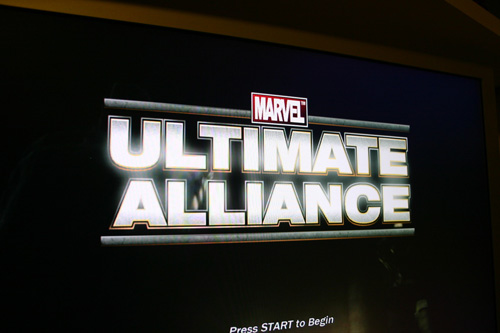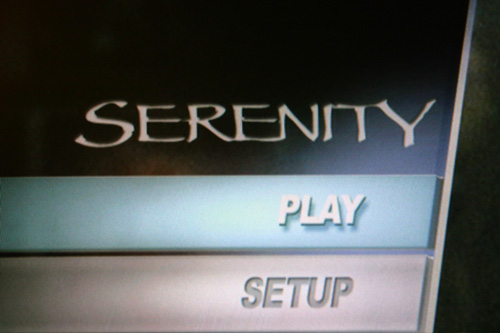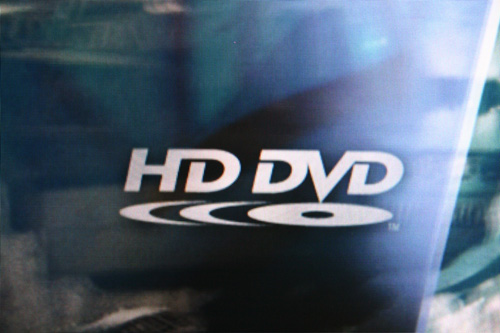I’ve noticed that for some reason things in my life tend to conclude in waves, which I call “finishing seasons”. I’m definitely in a big one right now, what with nearing the completion of my master’s in CMS at MIT, but what has me jazzed this morning is my final victory in a fight I’ve been waging since last December – how to get an Xbox 360 and its DVD-HD drive to play nicely with an Apple Cinema Display. It’s been a long, hard battle, but friends, it was worth it.
The Backstory
As some of you may know, I’ve been doing some research into storytelling in games. When Microsoft announced their XNA initiative, I got all excited because lowering the bar for game development and market entry increases the likelihood that new types of games will be created by new types of gamemakers. For guys like me who prefer games with really solid stories, XNA theoretically opens the door to storytellers that might not otherwise get into game development. Like, well, me.
So, last December I went out and bought myself an Xbox 360, and while I was at it I splurged and bought the DVD-HD drive. I have a massive Apple-based workstation in my office with a 23″ Apple Cinema Display, so I figured I’d hook it up to that and start messing with XNA when I found some time. (I also live with three other people, with our TiVo, PS2, original Xbox and Wii hooked up to one non-HD TV, so I wanted to decrease the amount of fighting over the living room.)
My first plan was to just buy the Xbox VGA cable, hook it up to a Belkin VGA-to-DVI adapter and be done with it. I picked up the parts, brought them home, put ’em together and fired it up. No picture. At first I thought I might have a dead Xbox, but no – it turns out that the core and premium Xboxes both output analog signals, even over their HD cables. An Apple Cinema Display, however, requires a digital signal. So, even if you used the aforementioned VGA-to-DVI adapter, like I did, it doesn’t work because it doesn’t convert the signal from analog to digital. (For more information, Google ‘DVI-I’ and ‘DVI-D’. An Apple Cinema Display only accepts DVI-D.)
My second plan, then, was to use an Elgato EyeTV Hybrid. The EyeTV Hybrid is a fairly humble device, but it’s also elegant in its own way. Don’t be confused by its list of features – while the EyeTV Hybrid does support both video game consoles and digital signals, it only accepts over-the-air HD television broadcasts and input from consoles via a coaxial cable or an S-Video cable. Its elegance comes from managing its input purely in software: to play the Xbox, I just fired up the Elgato TV application, turned on the Xbox, set the Elgato software to play in full-screen and both games and DVD-HD playback worked fairly well. As advertised, the Elgato system has virtually no latency making games definitely playable, and it also works fairly well for watching TV on your Mac. For the price, it’s a decent solution.
The trouble with this system is the ‘weakest link’ flaw. In this case, it was the cabling. There’s no way to get a HD signal out of the Xbox and into the Mac through an EyeTV Hybrid, and the SD signal displayed on a Cinema Display is less than pristine. Some games are dark and murky (Marvel Ultimate Alliance is a seriously brooding, almost Gothic experience when played this way) and while they’re playable and fun, it’s not an optimal experience. A DVD-HD movie watched in this fashion offers very little improvement over a regular DVD played in Apple’s own movie player, if any at all. The additional interface widgets are nice, but what I really wanted was to be able to watch movies in HD on my HD monitor. I often work on my laptop while playing a movie in the background, and despite the divided-attention factor I’m enough of a media snob to really notice the quality drop when watching standard DVDs on an HD display. I was also irked by Apple’s advertising the 23″ as a ‘Cinema Display HD’, when Apple’s lack of hardware support for commercial DVD-HD or Blu-Ray movie playback, coupled with the lack of HDCP support in this model and the lack of alternative video-in ports like those offered in comparable (and cheaper) DELL displays, meant that I couldn’t actually display any HD cinema. This was definitely a case of ‘the early Christians get the best lions’, since I bought my rig in 2004, but I was still reluctant to replace my display to make this work.
Plan three, then, revolved around a specialty company from Woodland Hills, California. At MacWorld San Francisco in January of 2006, Gefen demoed their HDMate Scaler, a gadget about the size of a Mac mini that would serve as a combination upscaler and switch. An upscaler does precisely what the Apple Cinema Display needs – takes an analog signal and converts it to digital. The switch function enables users to plug in two component sources and one DVI source, output them all to one DVI display, and switch between them using an included remote control. The HDMate was stuck in development hell for over a year – in a burst of frustration, I even called the product ‘vaporware’ on their forums once, an accusation I now sheepishly retract – but they finally began shipping the devices this month.
The verdict? It was worth the wait, and the third time’s the charm.
The Pictures
It’s true that the Gefen HDMate is over twice as expensive as the EyeTV Hybrid, but the value difference becomes apparent when you compare the resulting images. The following pictures were all taken indoors with a Canon Digital Rebel, but they’re a fairly accurate representation. Click each photo for a high-res version. (And yes, my gamertag is Dreamsbay – it’s the name of my consulting company from my pre-MIT days. Say hello if you see me online.)
Xbox Live Logo – EyeTV Hybrid

Xbox Live Logo – Gefen HDMate

Gamertag – EyeTV Hybrid

Gamertag – Gefen HDMate

Marvel Ultimate Alliance – EyeTV Hybrid

Marvel Ultimate Alliance – Gefen HDMate

Marvel Ultimate Alliance Detail – EyeTV Hybrid

Marvel Ultimate Alliance Detail – Gefen HDMate

Where the difference really becomes apparent, however, is in the details on DVD-HD. As far as I know, the combination of an Xbox 360, an Xbox 360 DVD-HD drive and a Gefen HDMate is currently the only way to play commercial DVD-HD movies in high quality on an Apple Cinema Display. The Gefen HDMate is HDCP compliant, but the HDCP signal is only sent over digital cables, like the HDMI cable on the Xbox 360 Elite. I don’t know what the HDCP status will be on the Elite, but early reports are that PS3s hooked up via HDMI to an HDMate (using an HDMI-to-DVI adapter) downsample Blu-Ray signals to 1080i – the real high-end signal you’re looking for on this kind of a display is 1080p. I expect the Elite may do something similar.
That said, when an Xbox 360 and Xbox DVD-HD drive are hooked up to an Apple Cinema Display via component cables through the HDMate, the quality is jaw-dropping:
Serenity DVD-HD Logo – EyeTV Hybrid

Serenity DVD-HD Logo – Gefen HDMate

DVD-HD Logo – EyeTV Hybrid

DVD-HD Logo – Gefen HDMate

The Conclusion
Obviously, the quality of the display differs from disc to disc, but last night I watched Sahara in HD on my Apple Cinema Display and it was simply breathtaking. After four months of research, several false starts and way too much money thrown at the problem, I finally have the setup I set out to build. I can also finally understand why the cinema chains are running scared – for the first time I really honestly might prefer watching movies at home rather than in the cineplex. Mac fans, Xbox fans, HD fans – while this setup doesn’t come cheap, and there’s always the chance that something might yet screw it up, it is certainly something to behold.
And now, if you’ll excuse me, my Xbox is calling.
(Note: I’ve closed comments on this entry to avoid the flood of spambots and more die-hard enthusiasts pointing out how lame I am. To discuss this post, please visit its home on the Gefen forums at http://forum.gefen.com/topic.asp?TOPIC_ID=2418. Thanks!)


